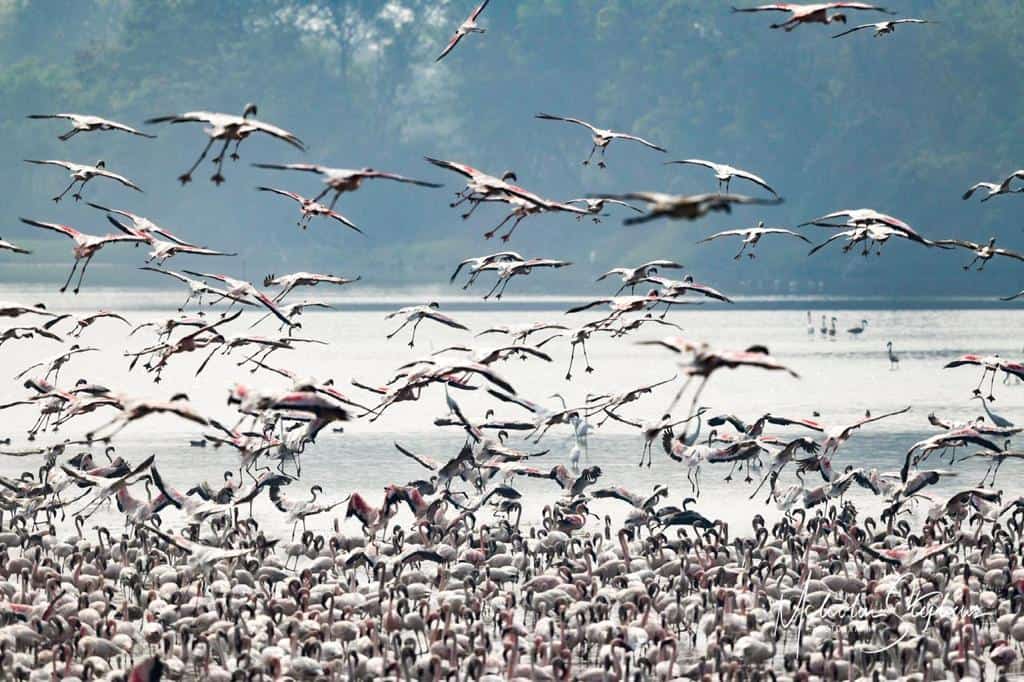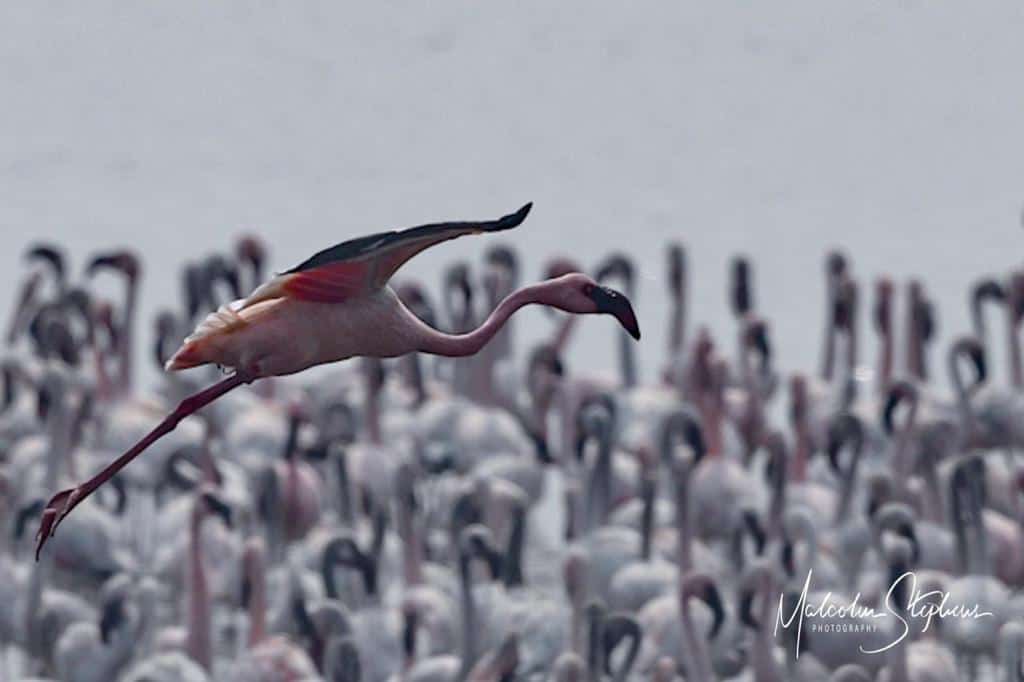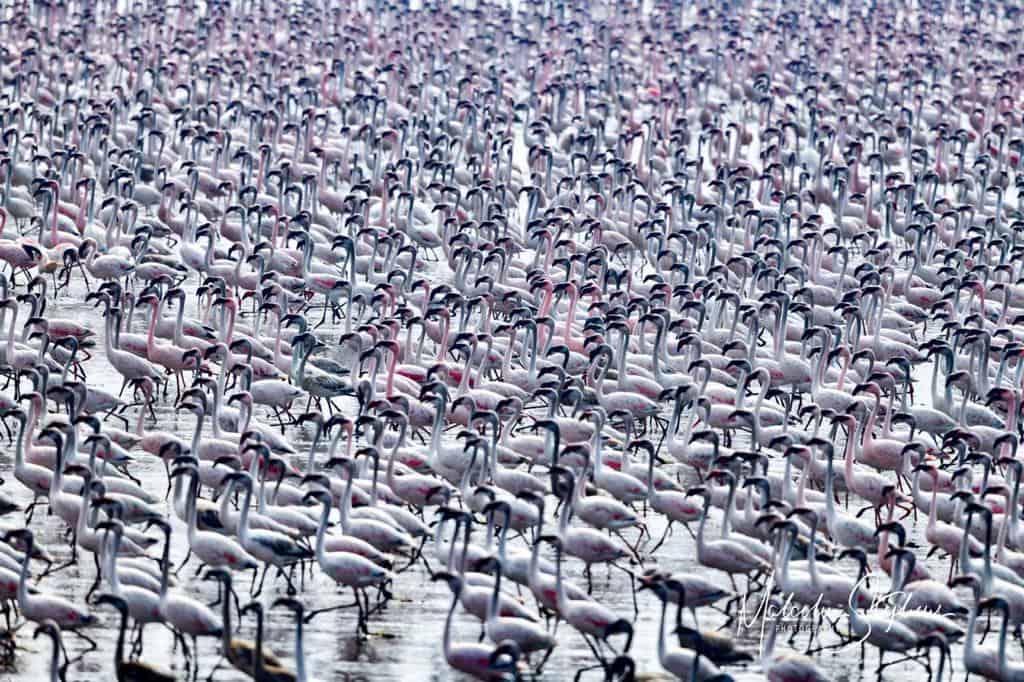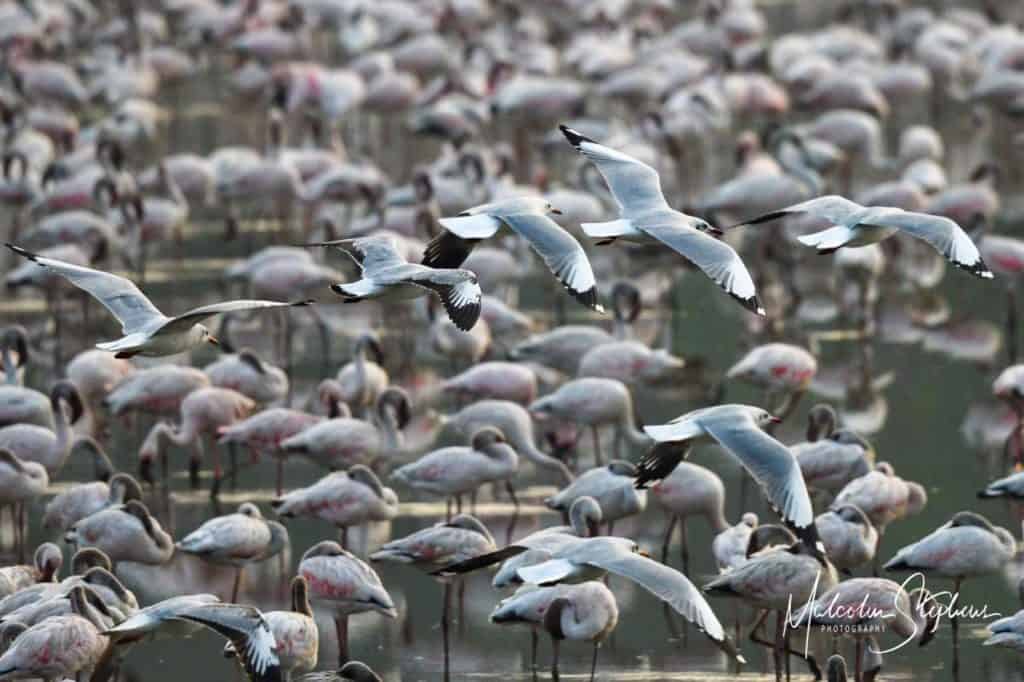It is magic at the DPS Lake these days. Located near Palm Beach Road behind Delhi Public School, Nerul in Navi Mumbai, the lake is home to many different species of birds. At this time of the year, the flamingos stand out and they are there in thousands!


Greater and Lesser flamingos fly in to Mumbai every winter from Kutch, Gujarat and Sambar Lake, Rajasthan. They are also known to come from other countries such as Pakistan, Afghanistan and Iran. The winters are harsh there, and apart from the warmth, the shallow waters at the mudflats at various spots in the Greater Mumbai area provide them with the algae, fish and other food that they thrive on.

About a decade ago, the area was identified as potentially great for a residential and commercial project. Today, the lake still exists only because of citizen activism and subsequent orders of the Bombay High Court.
Whenever I see these wonders, I remember with gratitude, the residents of the area who fought to keep this space “undeveloped” and protected.


The sight at DPS Lake the other day was breath-taking. For a short time, all the flamingoes were facing in the same direction. My friend Rattan observed that they probably were waiting for the signal from their leader to take off.

The lake soon got overcrowded and many flew away, probably to Talawe Wetlands and the T.S. Chanakya maritime campus. These are the other spots in our neighbourhood that flamingos love.

Flamingo habit is constantly under threat. The mangroves that line our coastline are under threat. But we people living in the area are committed to make the magic last forever.
Also read:
Great write up, accompanied by stunning pictures. Kudos to the citizens for preserving the lake and to Malcolm Stephens for highlighting the wonderful annual flamingo migration.
Do they come in the afternoons?
At what time?
Please let me know so that I can take 15 mins to reach DPS lake
After 12 they start to gather there.
Beautiful pics and superb writing. Congrats and keep it up.
Awesome pics by Malcolm. Thanks to the citizens who preserved the wetlands for the beautiful birds who arrive year after year.